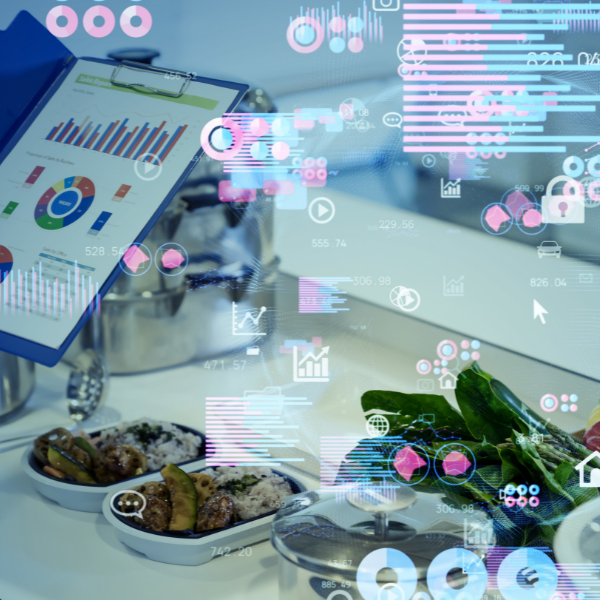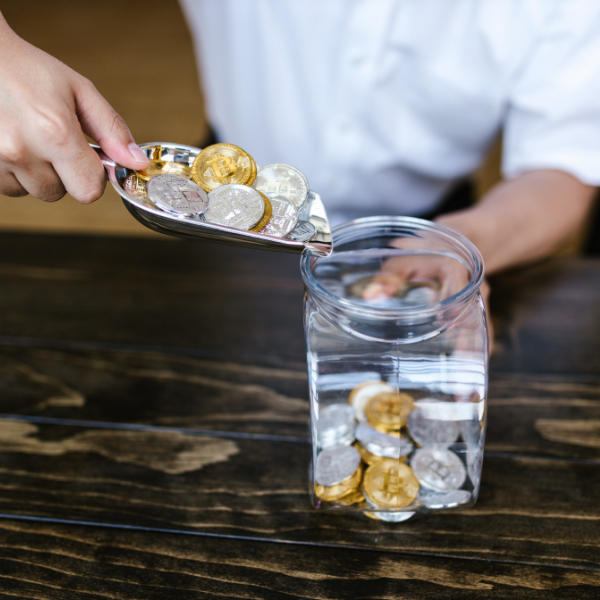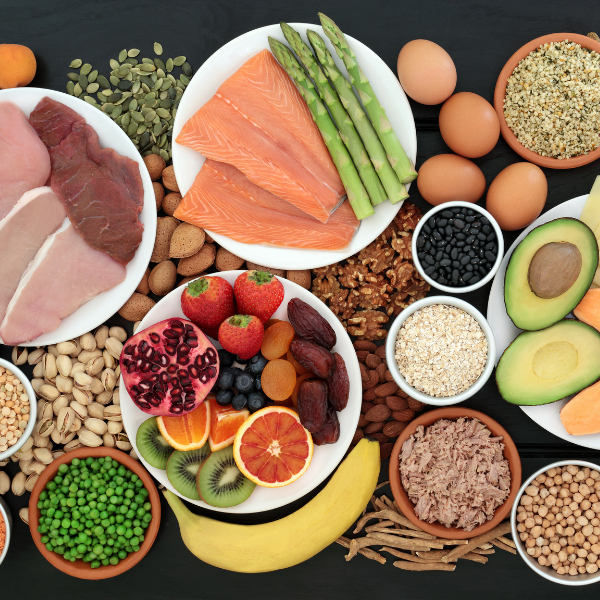In the realm of sustainability, the journey of a product begins with understanding its roots. Delving into the origins is crucial for making environmentally conscious choices. As consumers, let's embark on a journey to explore the genesis of our eco-friendly marvels.
Acacia
Acacia, a marvel in sustainable material choices, begins its life in carefully managed plantations. The cultivation and harvesting process prioritizes rapid growth, ensuring a minimal environmental footprint. Acacia's resilience and versatility set the stage for products that stand the test of time.

Beginning Of Life
Acacia wood is widely used for various products, including furniture, flooring, kitchenware, and decorative items. The natural durability and attractive grain pattern make it a popular choice for manufacturers. Acacia products are known for their longevity due to the natural properties of the wood. For example, well-maintained Acacia furniture can last many years, adding to the material's sustainability. Proper care and maintenance, such as regular cleaning and occasional refinishing, can extend the lifespan of Acacia products. This contributes to a more sustainable and eco-friendly usage of the material.
End Of Life
Acacia products may be disposed of at the end of their usable life. Proper disposal methods, such as recycling or composting, can minimize the environmental impact. Some Acacia products, excellent wood ones, can be recycled. To make new furniture or other wooden items. Acacia products that are untreated or finished with eco-friendly materials can be composted, contributing to soil enrichment. Unfortunately, some Acacia products may end up in landfills, especially if they are unsuitable for recycling or composting. However, efforts should be made to minimize landfill disposal and prioritize more sustainable options.
Bagasse
Derived from sugarcane, bagasse transforms from a byproduct into a valuable material. This sustainable process not only repurposes waste but also reduces environmental impact. Bagasse becomes the cornerstone of products that merge functionality with eco-friendliness. It has gained popularity as an eco-friendly alternative to traditional packaging materials like plastic and styrofoam.

Beginning Of Life
Bagasse begins its life cycle with the harvesting of sugarcane. Sugarcane is a major crop in many tropical and subtropical regions. After harvesting, sugarcane is processed to extract sugar. The extraction process involves crushing the sugarcane to release the juice. Bagasse is a natural byproduct of this process. The bagasse is then further processed to create pulp. This pulp is the raw material for various products like plates, bowls, cups, and packaging. The bagasse pulp is molded into different shapes using heat and pressure. This process results in the formation of sturdy and lightweight products. The finished bagasse products are packaged and distributed to various industries, including food service and catering.
End Of Life
Bagasse products are commonly used for serving food and beverages at events, restaurants, and households. One of the significant environmental benefits of bagasse products is their biodegradability. As they are made from plant fibers, they can naturally decompose when disposed of in composting environments. Ideally, bagasse products are sent to composting facilities, where they can be broken down into organic matter. The compost produced can be used as a nutrient-rich soil amendment. If bagasse products end up in landfills, they still offer advantages over traditional plastics. While they might take longer to break down in a landfill than composting, they are less environmentally harmful. Depending on local recycling facilities, some bagasse products may be suitable for recycling to reduce overall waste. The end-of-life of bagasse products has a significantly lower environmental impact than non-biodegradable alternatives. They contribute to reducing plastic pollution and lowering the carbon footprint.
Bamboo
Immerse yourself in the world of Bamboo, a rapid-growing and versatile material. Bamboo embodies eco-friendly characteristics from its origins in nature to the manufacturing floor. Its potential to revolutionize sustainable manufacturing is evident in every product that carries its mark.

Beginning Of Life
Bamboo is a fast-growing grass that can be harvested sustainably. It reaches maturity in just a few years, depending on the species. Harvesting involves cutting the bamboo stalks, leaving the roots intact for regrowth. This method allows bamboo to be a renewable resource. After harvesting, bamboo goes through various processes to become a usable material. This can include cleaning, treatment, and drying to enhance its durability and pest resistance. Bamboo can be transformed into a wide range of products, including furniture, flooring, utensils, clothing, and more. The versatility of bamboo allows for the creation of both traditional and modern designs. Bamboo cultivation has positive environmental impacts. It helps prevent soil erosion, requires minimal water, and absorbs more carbon dioxide than other trees. Bamboo forests also provide habitats for diverse ecosystems.
End Of Life
Bamboo products are known for their strength and durability, contributing to a longer usage phase than other materials. Bamboo products are biodegradable when they reach the end of their life cycle. This means they can decompose naturally, returning to the soil without leaving harmful residues. The decomposition process is relatively fast compared to many other materials, minimizing environmental impact. Some bamboo products can be repurposed or recycled. For instance, bamboo fibers can create new textiles or composite materials. Reusing bamboo products reduces the demand for new resources and extends their life cycle. Unlike synthetic materials that may release harmful substances during decomposition, bamboo's natural breakdown has a minimal environmental impact. Bamboo's decomposition enriches the soil with nutrients, completing a sustainable cycle.
CPLA
CPLA is a biodegradable plastic derived from renewable sources like corn starch. It composts at the end of its life cycle, offering an eco-friendly alternative to traditional plastics.

Beginning Of Life
CPLA, or crystallized polylactic acid, is a biodegradable and compostable plastic derived from renewable resources such as corn starch or sugarcane. The production process starts with the extraction of starch from these plant-based sources, which is then fermented to produce lactic acid. Through polymerization, lactic acid is transformed into polylactic acid (PLA), the primary component of CPLA plastic. CPLA is considered environmentally-friendly as it originates from renewable feedstocks and reduces reliance on traditional fossil fuels. Its biodegradable nature makes it a sustainable alternative to conventional plastics, contributing to the reduction of environmental impact during its initial stages of life.
End Of Life
At the end of its life cycle, CPLA plastic offers a more sustainable disposal option compared to traditional plastics. CPLA is designed to be compostable, meaning it can undergo biological decomposition in a composting environment. When CPLA products are disposed of in industrial composting facilities, they break down into natural components such as carbon dioxide, water, and organic matter. This process allows CPLA to return to the soil as nutrient-rich compost, contributing to the circular economy and minimizing environmental pollution. However, it's crucial to note that proper disposal methods are essential for realizing the environmental benefits of CPLA, and consumers should adhere to composting guidelines to ensure the efficient decomposition of this eco-friendly plastic.
Coconut
The coconut palm offers more than just a tasty treat. Products derived from coconut harness its various parts, contributing to sustainability. By utilizing every aspect, the coconut becomes a symbol of resourcefulness and environmental consideration.

Beginning Of Life
The life cycle of coconut products starts with the growth of coconut palms in tropical, humid coastal areas. These stages include cultivation, harvesting, processing, utilization, and disposal. Coconut palms need several years to mature and, once matured, can produce fruit for many decades. Coconuts are harvested around 12 months old, when their outer husk has turned brown, signaling readiness. The next step is processing, which involves husk removal and extraction of coconut water and meat. The meat then gets processed into coconut oil, milk, and desiccated coconut for various uses. Coconut oil is utilized in cooking and personal care, coconut milk in culinary applications, and desiccated coconut in baking and as a topping.
End Of Life
Like any other organic material, coconut products have a natural end of life. As they are biodegradable, coconut shells and husks can be composted, returning nutrients to the soil. In some cases, coconut waste is also used as a source of energy or as a raw material for making products like activated carbon. It's important to note that the environmental impact of coconut product disposal depends on the methods used. Sustainable practices, such as composting or recycling coconut waste, contribute to a more eco-friendly life cycle.
Cloth And Cotton
Explore the sustainable synergy of cloth and cotton, cultivated through organic farming practices. The eco-friendly journey of these materials begins with responsible agriculture, ensuring that every fiber tells a story of environmental consciousness. The life cycle of cloth and cotton products encompasses various stages, from raw material extraction to manufacturing, usage, and disposal. Let's delve into the beginning and end of life for these products.

Beginning Of Life
The life of cotton products begins with the cultivation of cotton plants. Cotton fibers are harvested from the seed pods of the plants. The harvested cotton fibers undergo ginning and spinning processes to create yarn. Fabrics are woven or knitted from wool, and additional processes like dyeing, printing, and finishing contribute to creating diverse textile products. Manufacturers use the fabric to create various products, including clothing, household textiles, and industrial materials. The lifespan of cotton and cloth products depends on quality, maintenance, and frequency of use. Proper care, including washing and storage, can extend the life of these products. Following care instructions on clothing labels is crucial to maintaining their integrity.
End Of Life
Over time, clothing and textiles may experience wear and tear, ending their functional life. Factors like fabric quality and usage patterns often influence this. Reuse and recycling any textiles can find a second life through reuse or recycling. Donating clothing or repurposing fabrics into new products helps extend their lifespan. When garments or textiles are no longer usable, they often end up in landfills. Natural fibers like cotton can decompose, but synthetic fabrics may persist long, contributing to environmental challenges. Efforts are underway to develop innovative recycling technologies for textiles. Some processes can break down fabrics into raw materials for new products, contributing to a more sustainable approach. The environmental impact of the end-of-life stage is significant, especially when textiles end up in landfills. The decomposition of natural fibers releases carbon dioxide, and the breakdown of synthetic materials can release harmful chemicals.
Palm
Palm trees, belonging to the family Arecaceae, are essential components of tropical and subtropical ecosystems. With a distinct, unbranched trunk topped by a crown of leaves, palms encompass diverse species, each adapted to specific climatic conditions. Palm oil, derived from the fruit of oil palm trees, is a versatile ingredient in manufacturing packaging materials such as biodegradable and compostable containers, plates, and utensils.

Beginning Of Life
Palm foodservice products embark on their journey at the inception of sustainable cultivation practices. Derived from the versatile palm tree, these products often start as responsibly harvested palm leaves or fibers. The cultivation process prioritizes environmental conservation and ethical practices, ensuring minimal ecosystem impact. From the initial stages of palm material extraction, manufacturers focus on creating eco-friendly alternatives to traditional disposable items, embracing biodegradability and compostability. This conscious beginning sets the foundation for a product line committed to reducing the environmental footprint associated with single-use foodservice items.
End Of Life
As palm foodservice products gracefully conclude their lifecycle, they seamlessly integrate into the environment through eco-friendly disposal. Designed with biodegradability in mind, these items break down naturally, returning to the earth without leaving a lasting trace. Compostable palm products, in particular, complete their journey by transforming into nutrient-rich compost that enriches the soil. This environmentally harmonious end-of-life scenario aligns with the principles of a circular economy, where waste becomes a valuable resource. By choosing palm foodservice products with responsible end-of-life solutions, consumers contribute to a sustainable and regenerative approach to single-use items in the food industry.
Poplar
As a versatile hardwood, poplar is known for its light color, fine texture, and relatively low cost compared to other hardwoods. In the realm of foodservice packaging, poplar is utilized for crafting disposable wooden plates, bowls, and utensils. These items offer an eco-friendly alternative to traditional plastic or paper products, aligning with the growing demand for sustainable and biodegradable packaging solutions.

Beginning Of Life
Poplar foodservice products start as sustainably sourced poplar wood, known for its rapid growth and renewability. Harvesting is done responsibly to ensure minimal environmental impact. The wood is then processed into various forms suitable for foodservice items, such as disposable plates, cutlery, and takeout containers. These products offer a natural and eco-friendly alternative to traditional single-use plastics. The manufacturing process often involves minimal energy consumption, contributing to a lower carbon footprint than conventional materials.
End Of Life
At the end of their life cycle, poplar foodservice products are biodegradable and compostable. When disposed of in industrial composting facilities, these items break into organic matter, leaving no harmful residues. This process contributes to nutrient-rich compost, promoting soil health. Alternatively, if placed in regular waste streams, poplar products will still decompose over time without leaving a lasting environmental footprint. By choosing poplar-based foodservice items, consumers and businesses can support a sustainable, circular economy that prioritizes the responsible use and disposal of resources.
PLA
PLA (Polylactic Acid), a biodegradable and compostable polymer derived from renewable resources like corn starch, has found widespread usage in the foodservice packaging and plating industry. Embraced for its eco-friendly properties, PLA packaging offers a sustainable alternative to traditional plastics.

Beginning Of Life
Polylactic Acid (PLA) foodservice products originate as biodegradable alternatives sourced from renewable materials like corn starch or sugarcane. In manufacturing, these materials ferment to produce lactic acid, which polymerizes into PLA. This process consumes less energy than traditional plastics, enhancing eco-friendliness. Widely used in food packaging, disposable cutlery, and containers, PLA exemplifies a sustainable choice, reducing dependence on finite fossil fuels and fostering a circular economy from cornfields to processing plants.
End Of Life
PLA foodservice products offer an environmentally conscious disposal option at the end of their useful life. PLA is compostable, and when exposed to the right conditions, it undergoes microbial degradation. Composting PLA releases carbon dioxide and water, leaving behind nutrient-rich humus that can be used to enhance soil fertility. It is crucial, however, to ensure proper disposal methods. PLA items do not decompose efficiently in conventional recycling streams and should be directed to industrial composting facilities. This end-of-life approach ensures that PLA products close the loop sustainably, contributing to reducing traditional plastic pollution and supporting a more circular and eco-friendly foodservice industry.
Wood
Wood has become a sustainable and aesthetically pleasing material in the foodservice plating and packaging industry. In plating, wooden serving boards, plates, and utensils add a touch of natural elegance to presentations. The warm and rustic appeal of wood enhances the visual experience, making it a popular choice for both casual and upscale dining establishments. Wooden food containers and trays offer a biodegradable and compostable option, reducing the environmental impact of single-use packaging. Additionally, wood provides a sturdy and reliable packaging solution, ensuring food remains secure during transportation.

Beginning Of Life
Wood foodservice products, such as disposable utensils, plates, and packaging, begin their life as raw timber sourced from sustainably managed forests. These forests undergo responsible harvesting practices to ensure ecological balance and maintain biodiversity. Once harvested, the wood is processed and transformed into the desired shapes for foodservice items. Manufacturers often prioritize eco-friendly production methods, using energy-efficient processes and non-toxic finishes. The result is a range of disposable wood products that offer a natural and renewable alternative to conventional single-use plastics.
End Of Life
Wood foodservice products typically follow a sustainable disposal path at the end of their life cycle. Due to their biodegradable nature, these items can be composted, returning nutrients to the soil and completing a natural recycling process. Composting wood products not only reduces the burden on landfills but also contributes to the enrichment of organic matter in the environment. Alternatively, if incineration is chosen, wood releases carbon dioxide, a part of the natural carbon cycle. This contrasts sharply with non-biodegradable alternatives, providing a more environmentally conscious solution for the disposal of wood foodservice products. Recycling or upcycling options may also be explored, further extending the utility and sustainability of these items.
Sustaining The Cycle – A Holistic Approach To Product Life Cycles
Restaurantware stands at the forefront, not merely as manufacturers but as vanguards of a sustainable dining culture. Our acacia line, embodying both luxury and responsibility, serves as a testament to our commitment to pioneering a green revolution within the hospitality sector. In exploring the "Beginning of Life" and "End of Life," we've witnessed our sustainable marvels' birth, growth, and responsible farewell. Understanding and considering the entire life cycle of a product is not just a choice; it's a responsibility. As mindful consumers, let's champion products that prioritize their origin and exit strategy. By sustaining the cycle, we contribute to a future where every choice echoes through generations, leaving an indelible mark of environmental consciousness. Choose sustainability, embrace the journey, and collectively shape a world where every product tells a story of lasting impact.








